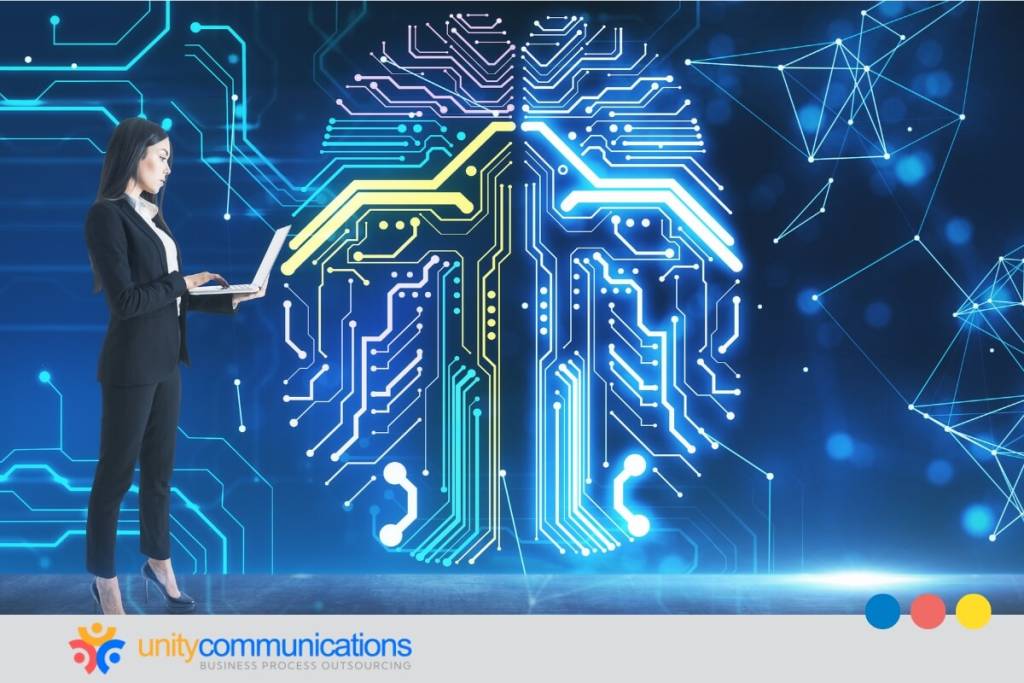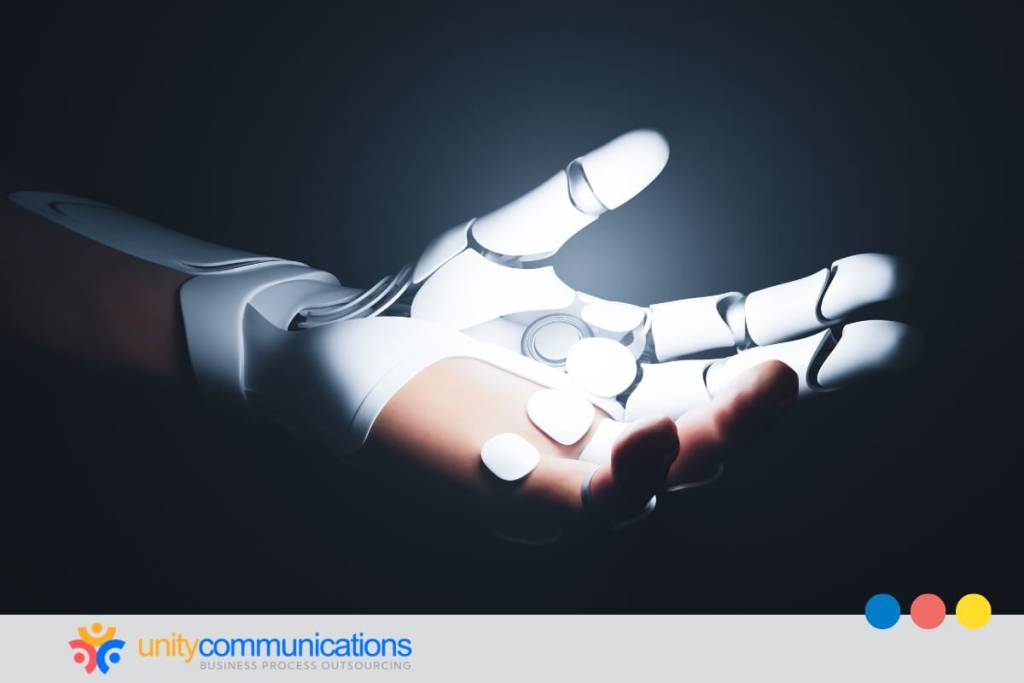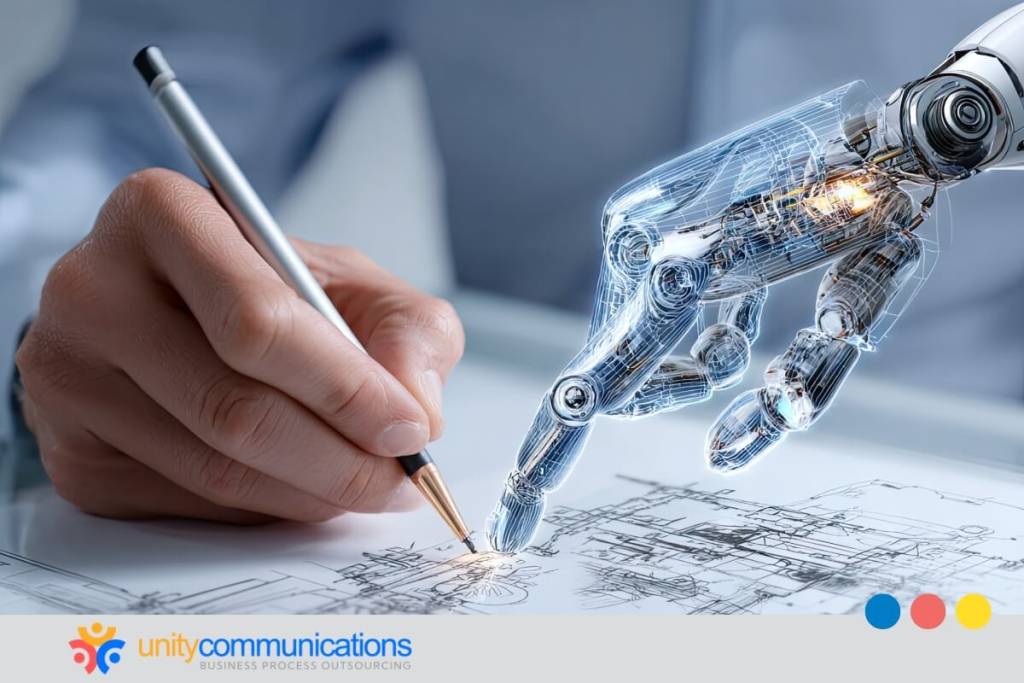Table of Contents
Artificial intelligence (AI) agents are active problem-solvers powered by interconnected components. These include machine learning (ML) models, natural language processing (NLP), memory, reasoning engines, and integration frameworks—all working together behind the scenes.
Together, they enable agents to learn, adapt, and act with purpose. They transform raw data into meaningful insights, enabling proactive, human-like decision-making.
Understanding these building blocks will help you comprehend how these agents operate. This guide will explain the key elements one by one.
Core AI agent components explained

To start, what is an AI agent? An AI agent is a system designed to perceive its environment, process information, and take action to achieve specific goals, often with a degree of autonomy and adaptability. Unlike traditional software, they learn from data, adapt to new inputs, and make proactive, real-time decisions.
To function effectively, AI agents rely on a set of interconnected components. ML models, NLP, reasoning mechanisms, memory, and integration tools work together to help the agent understand context, generate insights, and respond intelligently.
These components form the foundation that enables these agents to act as problem solvers rather than simple programs.
Here’s a closer look at key AI agent components:
1. Perception module: Helping AI agents interpret the world
The perception module is the foundation of an AI agent’s intelligence. It enables the agent to collect and interpret data from its environment, such as text, speech, images, or sensor input. Just as humans rely on their senses to understand the world, AI agents use the perception module to transform raw information into meaningful patterns that they can act upon.
In practice, this AI agent element allows:
- The technology to understand customer intent.
- A recommendation engine to detect user preferences.
- An autonomous system to recognize objects in real time.
Without perception, an AI agent would lack the awareness to make decisions or interact effectively.
The perception module ensures accuracy and relevance. A well-designed layer reduces errors, shortens response times, and creates smoother interactions in customer service, fraud detection, or supply chain monitoring.
By 2028, 15% of daily work decisions are expected to be made autonomously, highlighting the growing importance of perception and decision-making for companies. Understanding the perception module is part of grasping the fundamentals of AI agent design.
The perception model is responsible for comprehending how data flows through the system and powers higher-level functions, such as reasoning, learning, and decision-making. Without it, agents cannot effectively interpret context.
2. Action execution and effectors: Turning insights into action
Once an AI agent perceives and processes information, the next step is to execute the action. This is where the agent translates insights into tangible outcomes through effectors, which are the components that allow it to interact with the external world.
Depending on the application, effectors could be as simple as sending a response in a chat interface or as complex as directing a robotic arm on a manufacturing floor. This AI agent component drives measurable results and directly improves speed, consistency, and overall performance.
For example, an AI agent in customer service can instantly resolve simple inquiries, escalate complex cases, or trigger automated workflows. Logistics might reorder supplies or reroute shipments in response to disruptions. This ability to act is one of the defining characteristics of AI agents.
The real benefit is in this closed loop: sensing, reasoning, and then taking action that produces real-world impact. Without effectors, insights would remain theoretical, and the agent would fail to create business value.
3. Planning and task decomposition: Structuring intelligent actions
AI agents must plan to provide tangible value to your business. The planning and task decomposition module allows AI agents to break down complex goals into smaller, manageable steps. This process ensures that agents don’t just execute actions randomly, but follow a structured path toward achieving outcomes.
For example, a customer support AI agent might decompose requests such as “help me reset my account access” into multiple tasks:
- Verifying identity
- Checking system credentials
- Sending reset instructions.
By organizing actions into steps, AI agents guarantee precision, efficiency, and consistency.
This AI agent component is one reason adoption is accelerating. Today, 80% of businesses utilize AI agents in some form, underscoring their role in streamlining processes and enhancing speed and accuracy.
Thanks to planning and decomposition, AI agents have the depth to handle increasingly complex responsibilities without overwhelming human teams. When paired with perception and action execution, planning creates a complete intelligence cycle.
The AI agent understands its environment, designs a logical approach, and performs each step in sequence. This is a proactive problem-solver.
4. Memory and context management: Keeping AI agents consistent
Part of what makes AI agents really intelligent is their ability to remember past interactions and apply that knowledge to new situations. With this component, the system can store, retrieve, and utilize relevant information to enhance decision-making over time.
Memory and context management involves understanding context, enabling the AI agent to adapt responses based on its history, preferences, and ongoing tasks. With memory, agents can track multi-step processes to guarantee continuity even when tasks span days or have multiple stakeholders.
Without memory, every interaction would reset to zero. This capability is directly related to business process outsourcing (BPO). In the BPO industry, memory-driven AI agents can manage repetitive tasks, track client-specific requirements, and ensure consistency across thousands of customer interactions.
Retained context results in reduced errors, better customer satisfaction, and scalable, high-quality service. Memory and context management allows AI agents to provide continuity and personalization.
5. Decision-making and reasoning: Powering intelligent choices
The decision-making and reasoning engine helps the agent evaluate multiple options, weigh potential outcomes, and select the best course of action based on data and context. Reasoning is among the most advanced AI agent components for adaptive choices.
Unlike traditional software that follows rigid rules, reasoning engines allow AI agents to handle ambiguity, adapt to new inputs, and make choices that align with your goals. One example is detecting suspicious transactions by analyzing patterns and calculating risk scores.
Reasoning engines combine logic and probability to empower AI agents to solve real problems. This mirrors how outsourcing works.
Just as you delegate processes to third-party providers for expertise and efficiency, AI agents apply reasoning when delegating tasks internally, choosing the best approach, prioritizing work, and executing with precision. Both models share the principle of optimizing resources to achieve better outcomes at scale.
6. Learning and model refinement: Evolving over time
An AI agent would not be complete without the ability to improve over time. The learning and model refinement subsystem allows agents to analyze past performance, incorporate feedback, and adjust their behavior for better results.
With this component, the system evolves instead of remaining static. Consequently, agents become more accurate, efficient, and aligned.
Being adaptable is one of the most potent advantages of AI. It turns agents from one-time solutions into assets that become smarter with every interaction. The benefits for companies are lower maintenance costs, better performance, and a more substantial return on investment over time.
This subsystem makes AI agents sustainable. It ensures they adapt in response to market needs, customer expectations, and operational challenges.
7. Belief-desire-intention framework: Designing a goal-oriented agent
The belief-design-intention (BDI) framework is one of the most widely used models for building intelligent agents. It’s inspired by how humans make decisions and take action, giving AI agents a structure that combines reasoning with goal-oriented behavior.
Here’s a breakdown of its three parts:
- Beliefs are the agent’s knowledge about the world based on data and perception. Examples include what the agent “knows” about the environment, available resources, or current conditions.
- Desires are the goals or outcomes the agent aims to achieve. These represent its motivations, such as resolving a customer inquiry, optimizing a delivery route, or maintaining system security.
- Intentions are specific plans or actions the agent commits to to achieve its desires, given its beliefs. This is the execution part—what the agent actually decides to do.
The BDI framework is valuable because it balances adapting to new beliefs with sticking to chosen intentions. This makes it especially useful for complex environments where agents must act autonomously, prioritize tasks, and handle uncertainty.
This framework provides a structured approach for AI agents to transition from perception to goals to actions, much like humans do in real life when reasoning and making decisions.
The bottom line

As we’ve explored, the key AI agent components—perception, action execution, planning, memory, reasoning, and continuous learning—work together to create intelligent systems that deliver value.
Each element plays a distinct role. But their integration enables AI agents to adapt, make intelligent decisions, and deliver tangible results. Together, they create intelligent systems that provide real-world results.
This understanding goes beyond theory. AI agents are already transforming industries. And nowhere is this more evident than in the BPO sector. BPO companies are rapidly integrating AI agents into their workflows to improve decision-making and increase efficiency.
Partnering with a BPO provider that leverages AI agents may be the most effective next step to enhance operations and deliver improved experiences. Let’s connect to learn how.




